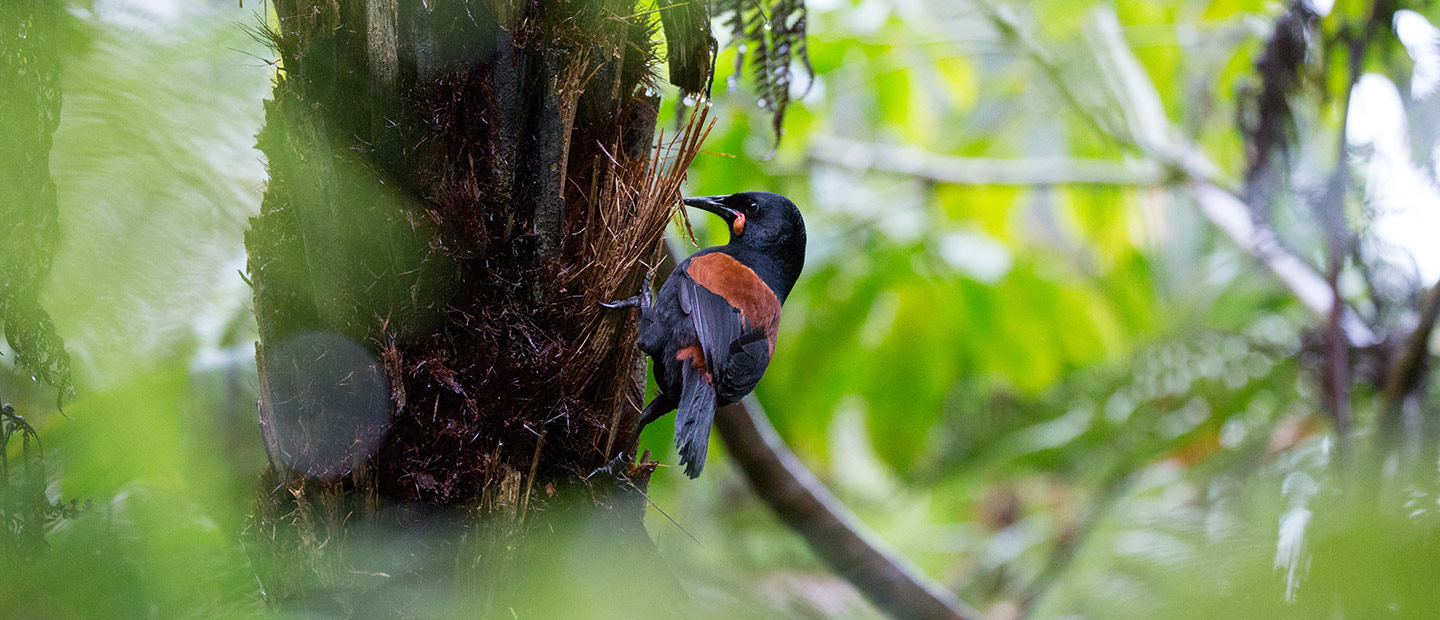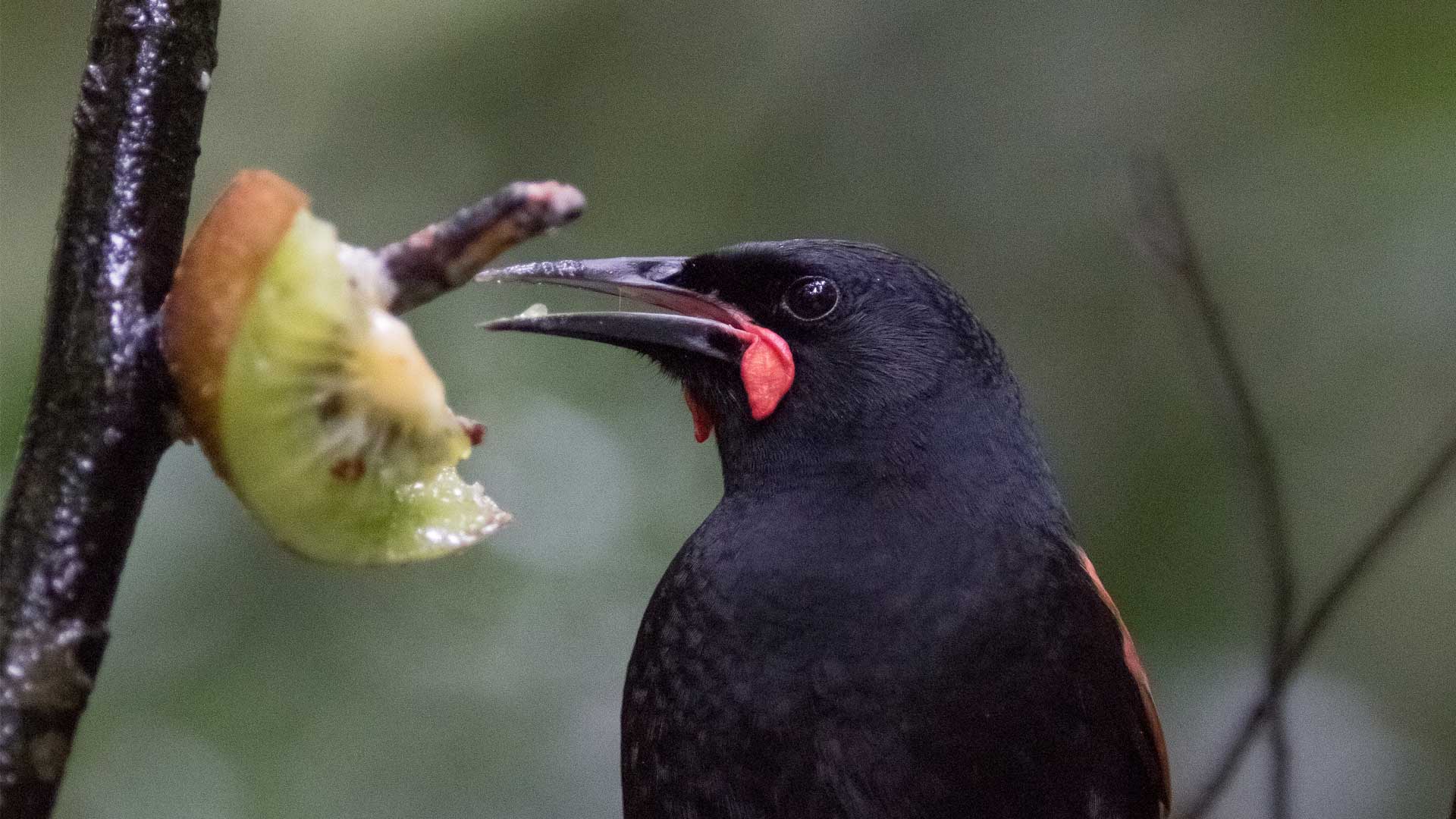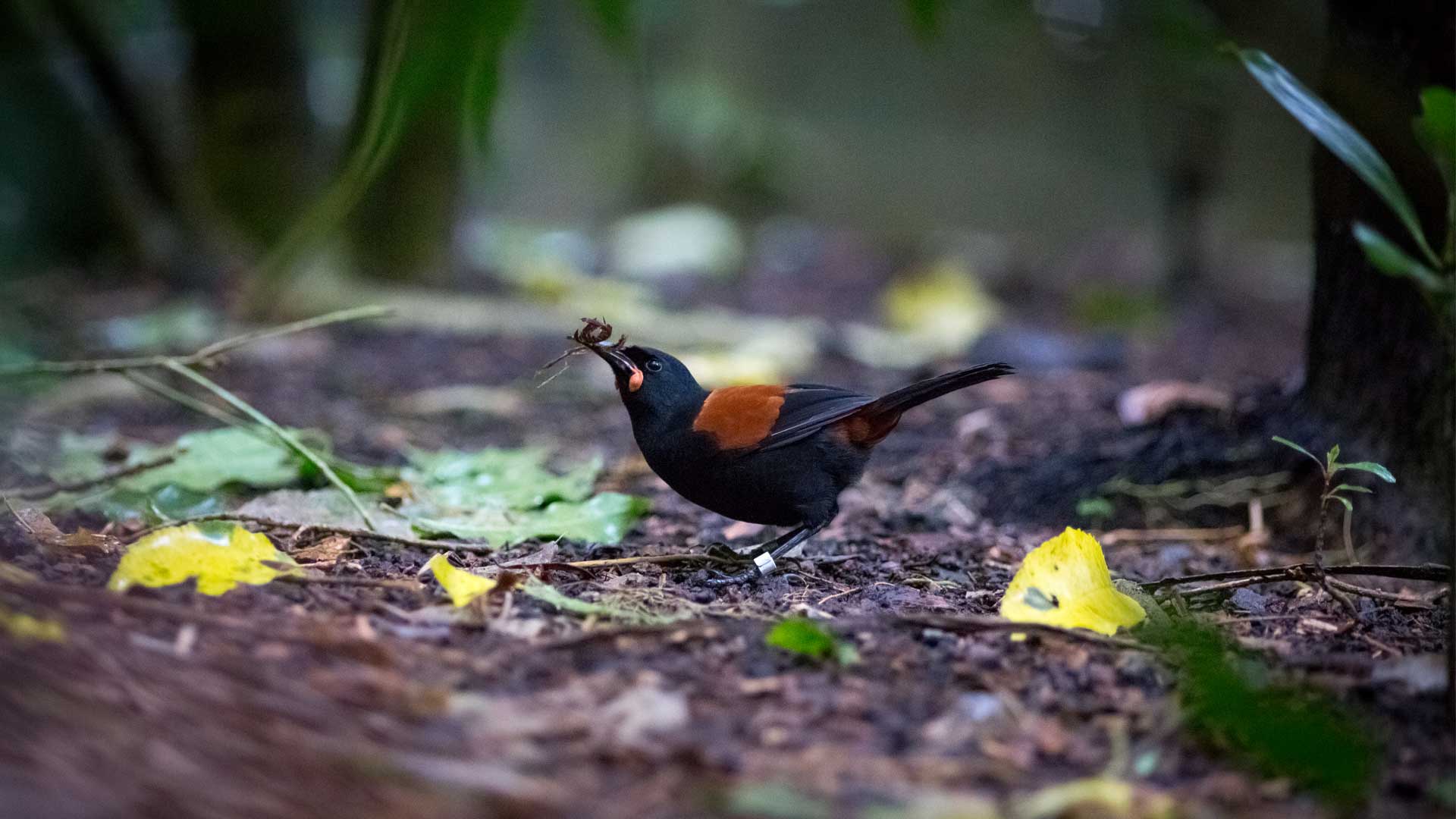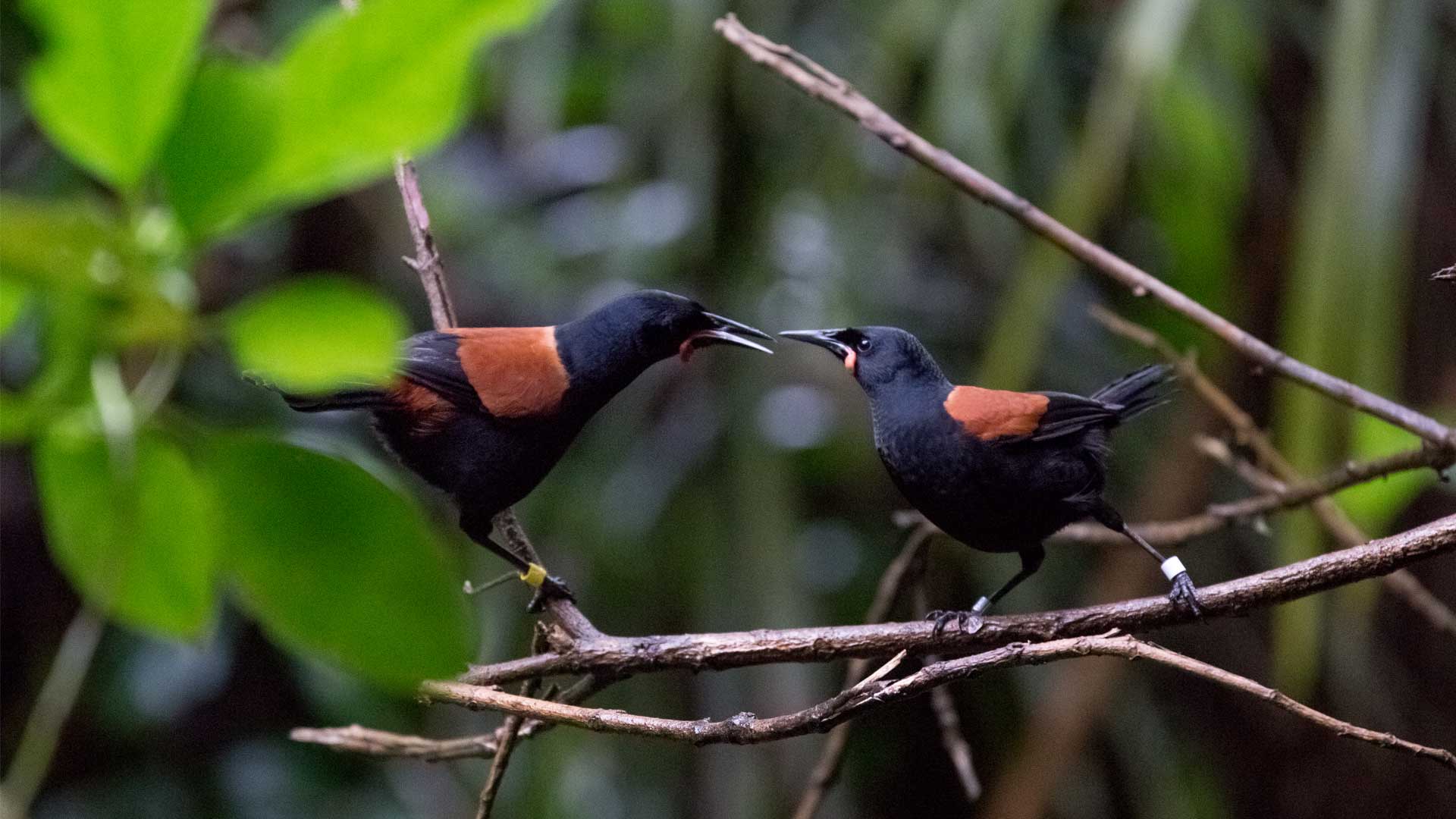The Māori name 'tīeke ' relates to the sound of their common call: ti-e-ke-ke-ke-ke
Member of wattlebird family – relatives of kōkako and (extinct) huia
Despite mainly eating insects, tīeke also eat fruit and nectar, dispersing seeds and pollinating flowers – an important role in the forest.
Tīeke groups develop their own dialects but appear to have no difficulty understanding each other when brought together through translocations. Territorial male birds sing a rhythmical song - more than 200 types of male rhythmical song have been recorded.
Their distinctive markings and unique dialects make them among the most iconic of New Zealand’s forest birds. Forty years ago their numbers had dwindled to just 500 - but today, there are more than 7,000 tīeke on predator-free islands and fenced mainland sites.





